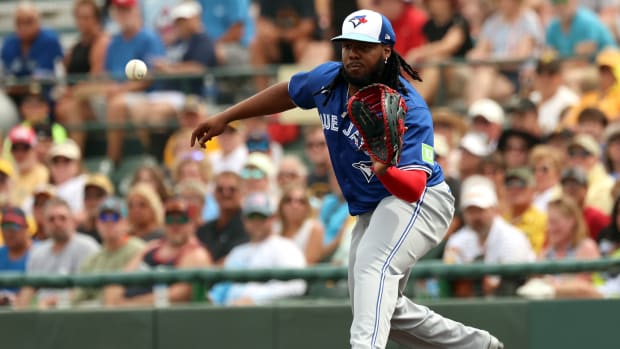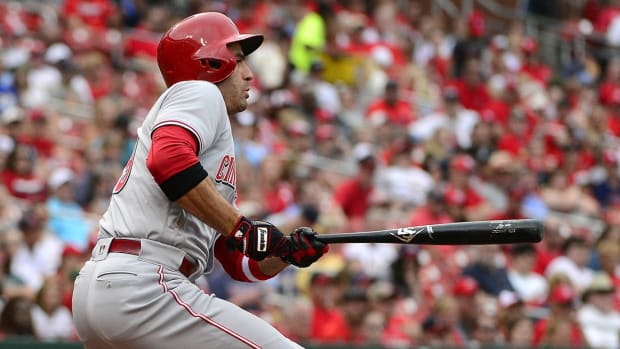'Not Fair To Hitters': Breaking Down Ricky Tiedemann’s Hot Start and Promotion
Ricky Tiedemann was never going to be in Dunedin very long.
The 19-year-old Blue Jays prospect was one of the best arms minor-league pitching coach Drew Hayes had seen at the Single A level, and he showed it in each of his six dominant starts.
In his 30 innings for Dunedin, the lefty posted a 1.8 ERA, striking out 14.7 batters per nine, walking 3.9, and allowing just one homer all year. The dominance earned Tiedemann a promotion this weekend, where will join the Vancouver Canadians, Toronto's High A affiliate.
"I don't know that I've seen anybody that's this good at this level," Hayes told Inside The Blue Jays last month.
At this point, Tiedemann should be squarely on everyone's radar. He's not the upstart riser with added weight and increased velocity anymore. Through April and May, Tiedemann met the ascending expectations that saw him sneak up prospect rankings and draw eyes in spring training this year, and some.
Tiedemann's biggest weapon is a high-90s fastball, using new velocity to blow strikes by hitters around the zone. But he also flashed two plus secondary options to keep Single A hitters off-balance in his six starts, crucial deliveries when southpaw heat becomes more common in higher levels. A called-strike plus whiff rate between 30-35% is considered good (at the MLB level), and all three of Tiedemann's pitches surpassed that mark for Dunedin.
His changeup, sitting about 10 miles per hour behind the fastball, is "outstanding" per pitching coach Hayes, and Tiedemann has great control on the pitch to throw it for strikes with a good movement profile. In his second start of the season, Tiedemann threw the change-of-pace pitch 27 times (one fewer than his 28 fastballs) and allowed just four pieces of contact (three outs and a soft single).
Though Tiedemann tore up Single A from day one, one of the biggest areas for improvement was working his sweeping slider into the strike zone. He was always able to drop it into the box during bullpens but in early starts this year it was really only a chase pitch.
In his first three starts for Dunedin, Tiedemann threw just 20 sliders and earned a solid 35% CSW rate. In his next three outings, he ramped the usage up to 42 sliders (including 20 in his final start before promotion) with an astounding 45% CSW rate. The pitch has significant horizontal and vertical movement, and he's shown a willingness to use it to lefties and righties and to both sides of the plate.
“It’s not fair to hitters when he can land all three pitches for strikes,” Hayes said.
Though Tiedemann can work in the occasional sinker, his three-pitch mix is at a point where he's ready to start climbing Toronto's minors. The 19-year-old's track is similar to another top Jays pitching prospect, Sem Robberse, who earned a mid-season promotion from Dunedin to Vancouver in 2021. With arms like Robberse and Tiedemann, who quickly prove they’re able to get guys out in the low minors, the development comes from specific game-to-game goals, not from the overall statline (as good as it can be).
In Dunedin, those challenges for Tiedemann were often centered around cutting down unnecessary walks and locating the slider, so it's not surprising to see a promotion after clear improvements and confidence in his third pitch.
Now the task is doing it at a higher level and for a full season. Jumping a league level in the middle of the year isn't always smooth, as shown by Robberse's Vancouver control struggles last year, but it's a fresh challenge Tiedemann earned.
After limited innings in junior college in 2021, the Jays were careful with Tiedemann's pitch buildup last summer, slowing working him up to not push his arm with the new heat. So far, the velocity and health have held, and Tiedemann's reigns are seemingly off. There was nothing left to do except challenge him at a higher level.







